7 Lead Magnet Ideas To 10X Conversion Rates In 2025

Burkhard Berger

October 1, 2025
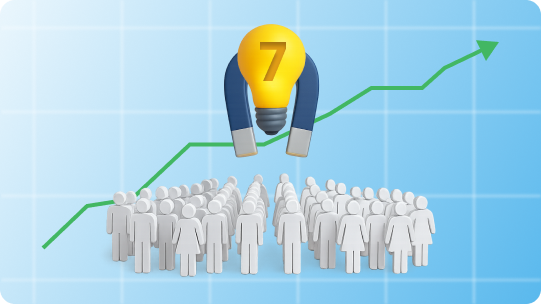



41% of marketers say their biggest challenge in 2025 is generating more leads.
Are you in the same boat? Then, it is time to rethink how you connect with your target audience, starting with better lead magnet ideas and examples.
In this article, we explore the core pillars of high-converting lead magnets and ideas designed to move people through your sales funnel. You can also find the best practices that will help you create lead-generating machines for your brand.
Pause after each pillar and quickly audit your current offer. Spot the gaps to shape a more effective lead magnet that converts.
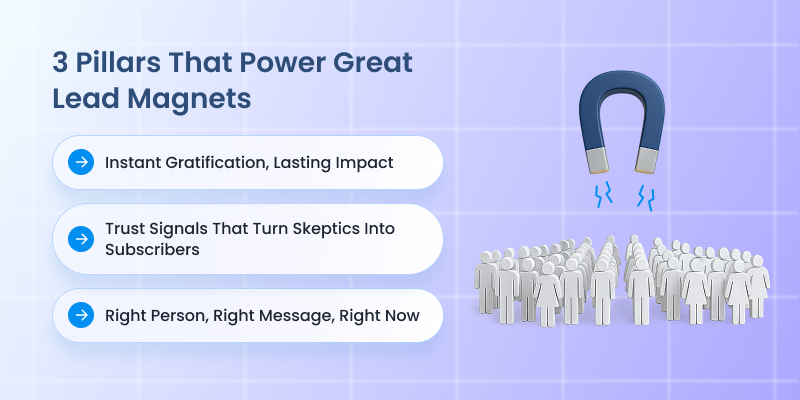
Instant gratification builds momentum. Consumers take action when they get results right away, even small ones.
Say you are in the health space selling migraine medicine like Brain Ritual. If your lead magnet offers them free access to a 60-second “Migraine Relief Quick Guide” with pressure points or calming techniques, potential customers can try it instantly and feel real relief.
That quick win builds trust fast. When you deliver valuable insights that they can download and use right away, they remember your brand as the one that helped.
What is one of the first things people look for before giving up their email? Proof that they can trust you.
But not all lead magnets give that. If your lead magnet feels vague or anonymous, people hesitate, no matter how useful it is.
Meanwhile, trust signals like a short testimonial, “used by 2,000+ marketers,” or even your photo with a real title help them feel safe enough to click.
For example, if you offer a free social media calendar, include a short review from someone who gained followers using it to show it works. That small detail builds confidence, sparks action, and moves you one step closer to real business growth.
Relevance is more than just about sounding good. It is about matching what your audience thinks, wants, or struggles with right now. Use that moment to fuel your conversion funnel from the very first click.
Let’s say you offer copywriting services. A lead magnet like “Headline Formulas That Boost Ad Clicks” speaks directly to marketers in the consideration stage who compare options and look for ways to improve performance.
That kind of precision helps you attract leads fast, and that is when lead magnets work at their best.
Scan each idea and ask, “Would my audience download this today?” If yes, use the practical points to gain a competitive edge in the lead magnet game.
You probably already checked out tons of lead magnet examples, and most of them hand out “what to do” advice.
But here’s a twist: what if you helped your audience by showing them what NOT to do instead?
With this type of downloadable lead magnet, you can grab attention fast because it feels:
Users can use this to recognize their own mistakes, which creates urgency to fix them. That emotional spark can drive action, including more clicks, more contact details, and more trust.
Done right, it becomes an excellent lead magnet that feels like more than just another blog post rehash. It delivers actual value and motivates people to gain access now, not later.
Pick a problem your audience faces often. For example, if you are targeting startups doing SEO, highlight the problem of building backlinks to improve rankings. Then, list 5 or more mistakes they do not realize they are making, and pair each with a quick fix.
Here’s what your initial “What NOT To Do” list can look like:
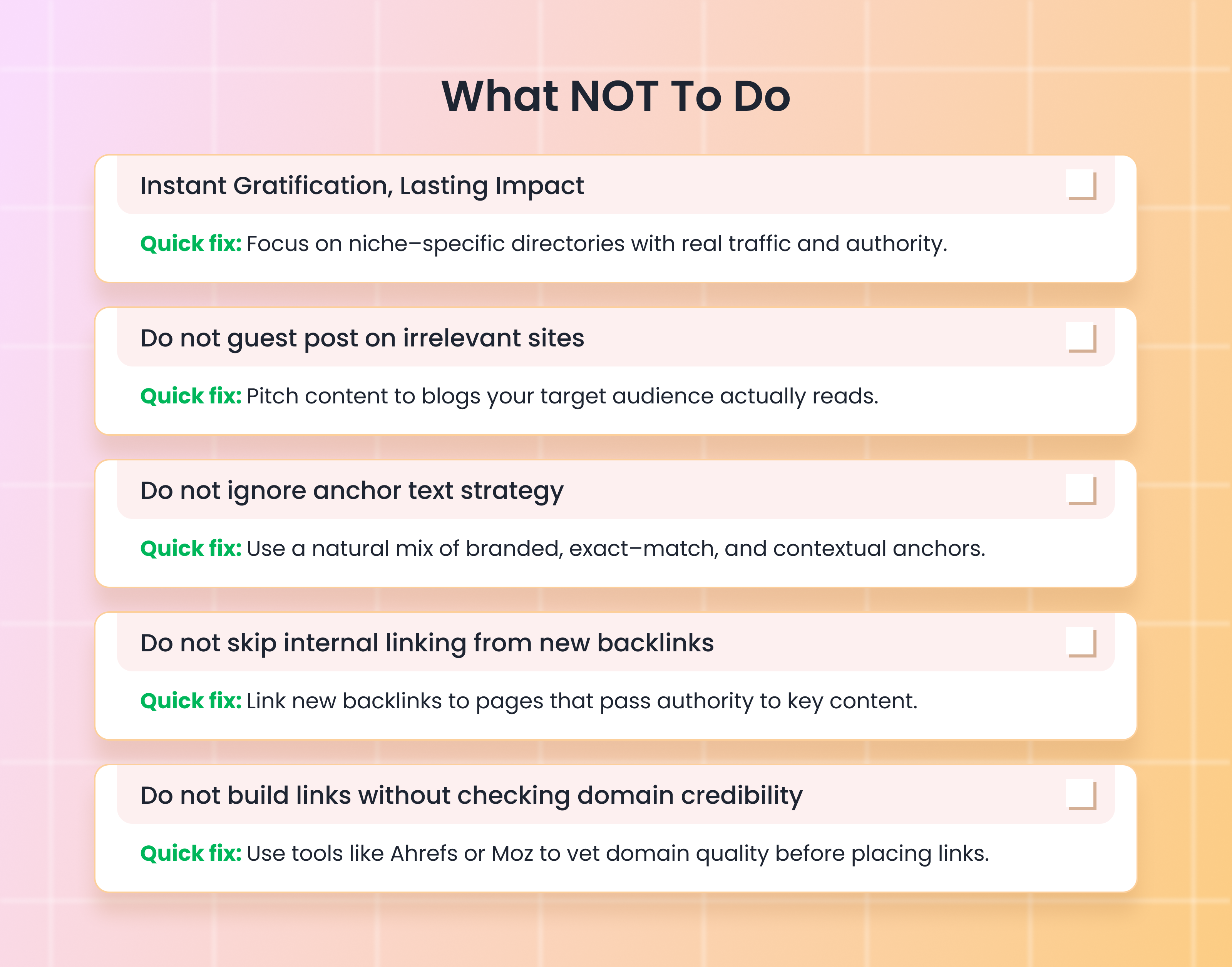
Most lead magnets teach. A template library lets people skip that step.
Think about it: all the user wants is a shortcut that works. With this lead magnet, your target audience solves a pain point without friction, and you earn permission to stay in their world.
That is why it converts because action builds trust faster than advice. When your website visitors plug in a ready-to-use tool and instantly solve a problem, they credit you with the win. That moment shifts you from “interesting brand” to “essential partner,” and that is when real, qualified leads show up.
Here’s a great lead magnet example from Funnelytics:
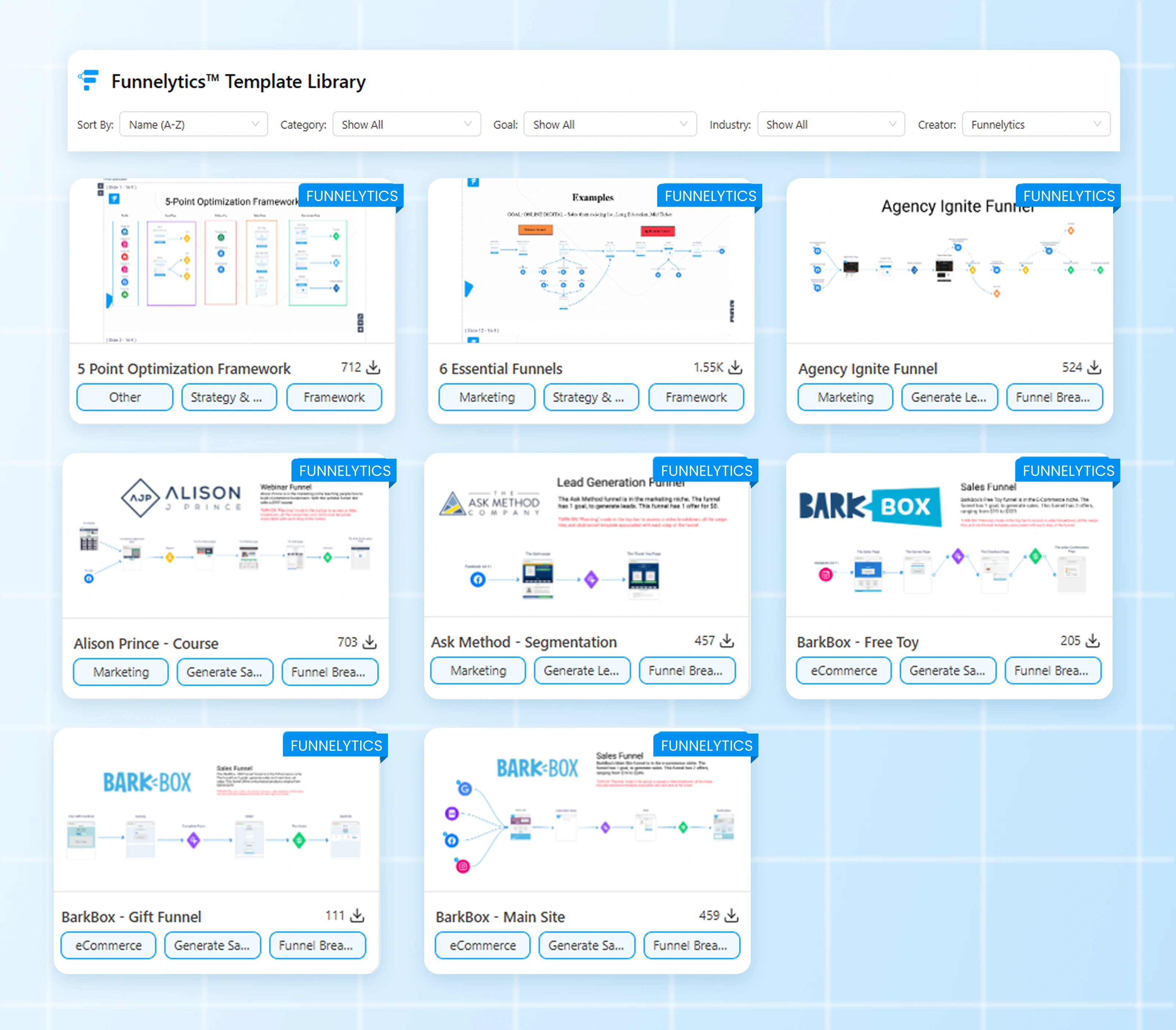
These Funnelytics templates help subscribers visualize, plan, and optimize real-world funnels without starting from scratch. Each template maps out proven strategies so users can plug in their own offer, shorten setup time, and make smarter decisions faster.
What if you create a lead magnet that gives your audience something they cannot Google, like connection, support, and shared wins?
That is the power of exclusive community access. It is not simply content; it is about giving them a sense of belonging.
When your audience feels seen, heard, and part of something, they trust faster and engage. This need for genuine connection becomes even more critical when you consider that nearly 63% of adults have encountered some form of cyber abuse during their digital interactions.
A safe, focused space, especially one built around growth and shared goals, gives people what they can’t find in most public platforms: peace of mind and real connection.
It is a valuable lead magnet that builds brand loyalty before the first sale.
Here’s Sephora’s Beauty Insider Community, which you can take inspiration from:
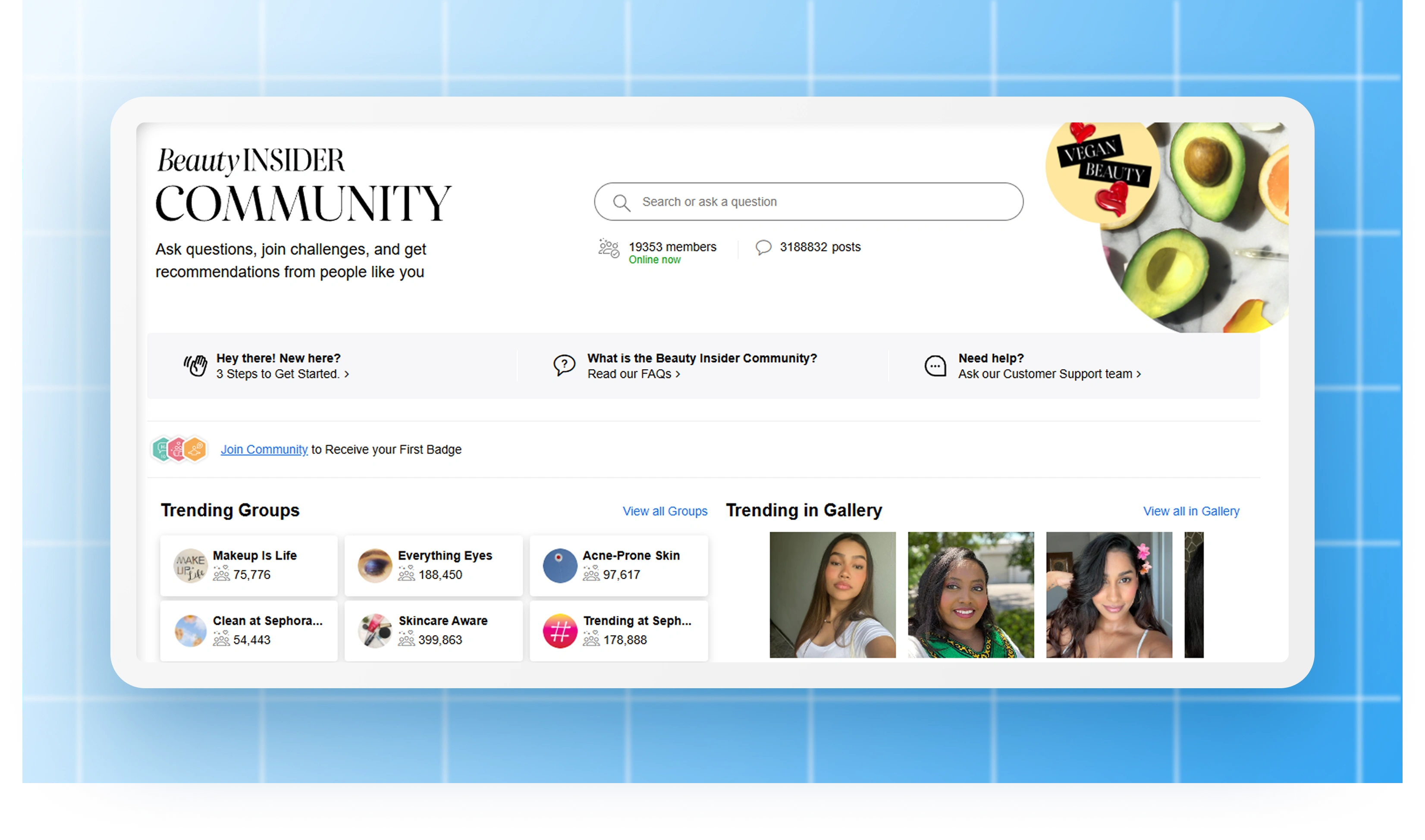
Sephora’s community gives members a space to share real routines, advice, and wins. You can create a similar lead magnet by offering exclusive access instead of an open group. When the right people gather around a shared goal, they stay engaged, and your brand stays top of mind.
Use a clear headline and signup form that sells the community’s outcome, not the platform. For example, let’s say you install solar panels. Say “Get seasonal maintenance tips and efficiency tweaks from solar pros” instead of “Join our private group for solar users.”
To make the community successful, set one goal for the group so it stays focused. Going back to our example, you can aim to:
That clear purpose keeps the discussions relevant and makes it easier for your members to stay engaged and see real value.
Once your community is up and running, you should:
Then, use the insights from those discussions to create better free tools or products.
To build a strong community, bring in an online community manager early. They can set it up on a platform your audience already uses and take the lead in keeping energy high and conversations flowing.
Everyone offers “quick wins,” but most still ask for too much upfront. The 5-Minute Fix Series cuts through that noise. Each fix delivers:
That small win gives your audience momentum because they feel progress, not pressure. When people take action and it works, they lean in. That is how you generate leads without pushing.
Pick one common, everyday problem. Nothing deep or strategic. For example, let’s say you are in the digital space offering social media solutions. Your 5-minute fix can be about:
To deliver your sprint fixes, use checklists, swipe text, or a one-click tool. But to make this a more effective lead magnet, do these:
You can ignore a PDF. You can skim a blog post. But it is hard to forget someone who shows up live and solves your problem on the spot.
That is what makes webinars a great lead magnet idea. They build real-time trust and show your audience you know your stuff. With that, you can turn hesitation into action.
Let’s start with planning. Choose one clear, outcome-driven topic your audience is actively searching for, not a vague “overview” session. So if you offer marketing automation services, here are your dos and don’ts:
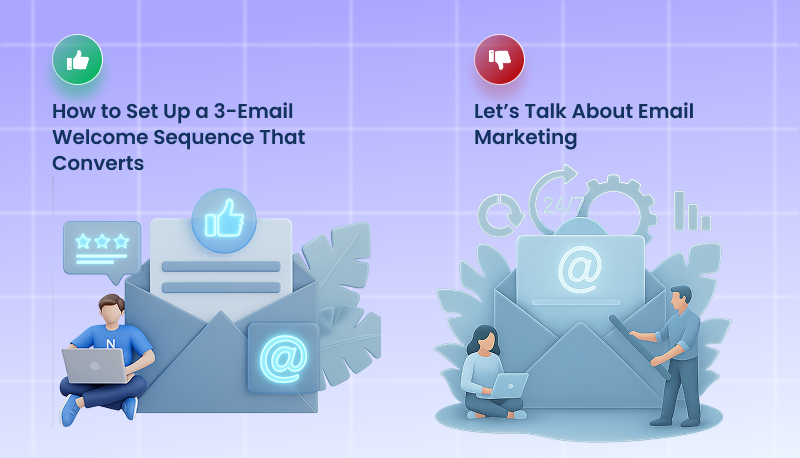
You should also map out a simple, focused outline with actionable takeaways that solve a specific problem within 20–40 minutes.
Now, to promote your webinar, do these:
During the actual webinar, make sure to:
After the event, follow up with a recap email and next-step CTA, like a discount, tool access, or replay link, to convert interest into action.
To maximize your webinars, hire a video editor to repurpose the best moments into short-form content for other platforms. Turn key takeaways into reels, quote clips, or carousel promos that keep the conversation going.
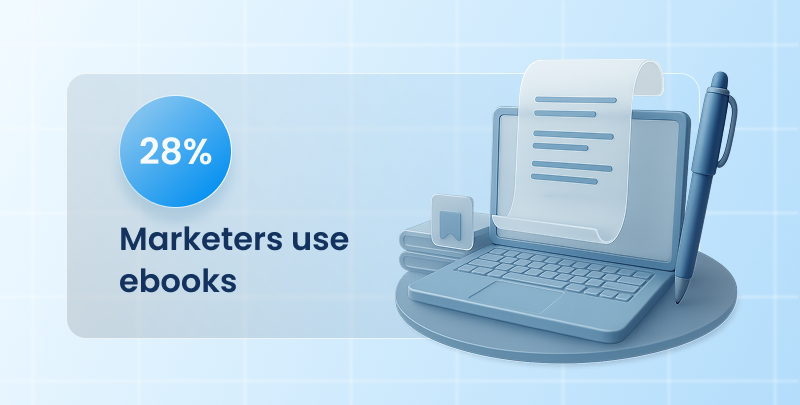
Nearly 28% of marketers use ebooks, which makes them the most common and powerful lead magnet funnel entry point.
Why is that?
Because a well-written free ebook feels like a complete solution. It gives potential customers a deeper experience while still falling under the umbrella of free resources.
Here’s the additional edge: when the eBook is short, easy to follow, and packed with value, it does more than just inform; it moves people to take the next step. That is what makes it an effective lead magnet idea worth investing in.
Start with a topic that demands depth, but stays narrow. For example, instead of a “social media strategy guide,” go with “How to Plan 30 Days of Instagram Content in 45 Minutes.” Make sure your topic benefits from structure and step-by-step guidance.
Next, structure it into 3–5 action-focused chapters. Then, each section should solve a sub-problem.
Additionally, make it skimmable without losing substance. To do this, use bold headers, callouts, bullet lists, and white space to break up dense content, so readers can grab key takeaways quickly.
You should also weave in examples that mirror the reader’s world. Show real use cases, visuals, or screenshots so the reader sees how to apply the ideas.
Lastly, close with a next-step CTA that feels helpful, not salesy. Link to a membership site, product, or offer, framed as a logical continuation of what they just learned.
Beyond the content itself, focus on these key elements to boost your ebook lead magnets:
What if a strong lead magnet did not solve a problem, but revealed it?
The Red Flag Finder acts like a flashlight that exposes what is broken before your audience wastes time or money.
How can this increase your conversion rates?
It makes them take action faster when they see a problem clearly. With this lead magnet, you can tap into that urgency. Instead of offering a full guide or free consultation upfront, help them name the problem.
Show someone where things go wrong, and they will want your help fixing it.
If you want to take it further, use Funnelytics to visualize how users move through your funnel in real time, so you can turn this self-audit into a live feedback loop.
For example, once users download your Red Flag Finder, you can track what they click next, where they drop off, and how that behavior differs from your high-converting paths. It turns a static audit into a full performance diagnostic, backed by visual data.
Identify a sneaky, expensive issue your audience overlooks. Then, turn it into a 3-minute self-audit using yes/no answers or red/yellow/green prompts to flag risk levels.
For example, let’s say you are in the design space making HDPE outdoor cabinets. A sneaky issue? Poor drainage that causes warping and rust. Turn that into a 3-minute self-audit:

To make this red flag auditor better, get going with these:
Cross-check your ideas with these practices while creating effective lead magnets. With this, you can spot what to cut, keep, or improve in minutes.
Do not treat their lead magnet's landing page like a side quest. A page that looks rushed makes lead magnets feel like an afterthought.
Instead, make this the moment your audience decides if the magnet is worth their contact details. Use landing pages to make your lead magnets feel intentional, benefit-packed, and simple to act on.
Here’s what you can include in your landing page:
Many free trials, free courses, or downloadable offers look like throwaway bonuses.
The results? They get skipped and deemed as low effort.
But when you design your lead magnets like a product, people treat them like they matter. It raises the perceived value, and with it, trust.
A polished asset signals, “If this is the free stuff, imagine what the paid version looks like.” That is how strong lead magnets become a smart lead generation strategy, not just filler.
Once you have packaged your lead magnet to look like a real product, you can use Funnelytics Map to visualize where it fits in your funnel.
Mapping it next to your traffic source, landing page, nurture emails, and core offer helps you spot if the product-style lead magnet is creating the engagement spike you want, or just sitting as a nice-looking asset with no traction. It is a visual way to test if “looking like a product” actually drives next-step action.
Here’s how to create lead magnets that look and feel like a real product:
Even the perfect lead magnet fails if your reader stumbles over unfamiliar terms. Many popular lead magnet ideas focus on quick wins, but if small business owners or new entrepreneurs hit a jargon wall, they stop reading.
Meanwhile, a micro-glossary removes that friction. It helps your audience stay in flow, even if they are not experts yet. This small touch signals, “You’re in the right place.”
Here’s an example:
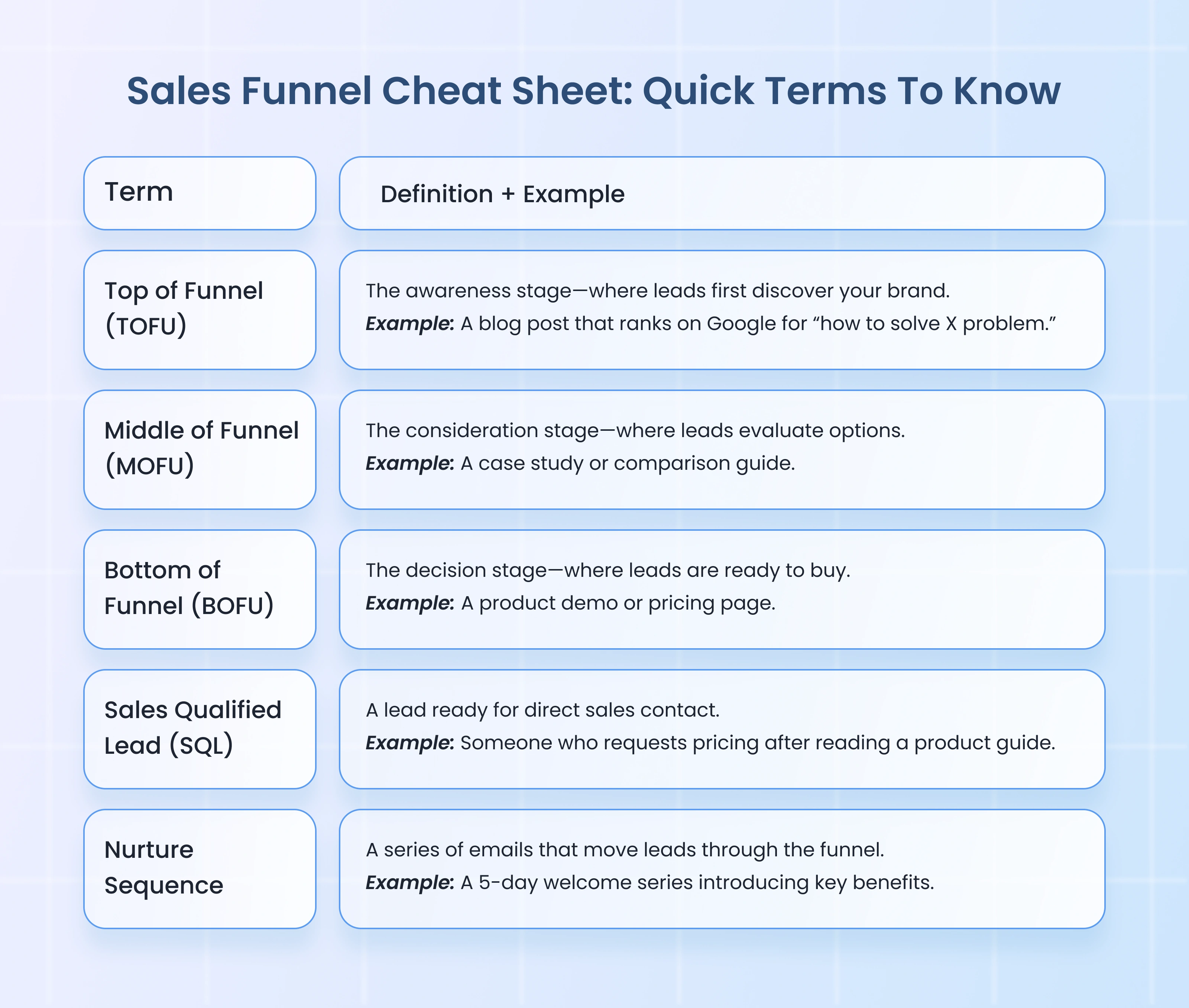
Here’s how to create one that works:
Do not try to build everything at once. Pick 2–3 lead magnet ideas that align with what your audience asks about most.
If they want to explore new strategies and need quick guardrails, give them a “What NOT To Do” list. But if they want a plug-and-play tool, give them a template pack.
Then, sketch a plan, assign one team member to own each task, and set a one-week timeline to ship the first version. The right lead magnet should do more than just collect emails. It should give your brand a trust booster.
Use a tool like Funnelytics to map where each lead magnet idea fits in your customer journey. It helps spot gaps, so every lead magnet drives real progress, not just downloads. Claim your free trial today and try out the platform.

Burkhard Berger is the founder of Novum™. He helps innovative B2B companies implement modern SEO strategies to scale their organic traffic to 1,000,000+ visitors per month. Curious about what your true traffic potential is?
Sign up for your free 14-day trial today and experience all the benefits Funnelytics will bring to your business first-hand. No contracts. No commitments. Just full-on customer journey insights.